
BULLETIN OF ENVIRONMENTAL CONTAMINATION AND TOXICOLOGY
Scope & Guideline
Advancing understanding of environmental health.
Introduction
Aims and Scopes
- Environmental Toxicology:
Research addressing the toxic effects of pollutants, including heavy metals, pesticides, and microplastics, on various biological systems, including aquatic and terrestrial organisms. - Ecological Risk Assessment:
Studies aimed at evaluating the ecological risks posed by contaminants in different environments, focusing on bioaccumulation, biomagnification, and overall environmental health. - Bioremediation and Phytoremediation:
Investigation of biological methods for the remediation of contaminated environments using plants and microorganisms to detoxify polluted soils and waters. - Microplastics Research:
Exploration of the sources, distribution, and ecological effects of microplastics in various ecosystems, particularly their impact on aquatic organisms and food webs. - Chemical Contaminants Analysis:
Methodological advancements in the detection and quantification of environmental pollutants, including the development of novel analytical techniques for assessing contamination levels. - Human Health Risk Assessment:
Research linking environmental contaminants to potential health risks in human populations, focusing on exposure pathways and toxicological impacts.
Trending and Emerging
- Microplastic Pollution:
Increasing focus on the sources, impacts, and remediation strategies for microplastics in various ecosystems, reflecting growing public and scientific concern over plastic pollution. - Nanotechnology in Environmental Science:
Emerging research on the use of nanomaterials for environmental remediation, including their potential benefits and risks in contaminant removal and toxicity. - Interactive Effects of Pollutants:
A shift towards understanding the combined effects of multiple pollutants, including chemical interactions and their cumulative impact on ecosystems. - Emerging Contaminants:
Growing emphasis on the study of emerging contaminants such as pharmaceuticals and personal care products, particularly their environmental fate and biological effects. - Ecological Restoration and Resilience:
Research focusing on ecological restoration practices in contaminated sites, emphasizing resilience and recovery of ecosystems affected by pollution. - Human Health and Environmental Linkages:
An increasing trend towards studies that connect environmental contamination with human health outcomes, highlighting the importance of understanding exposure pathways.
Declining or Waning
- Historical Contaminant Studies:
Research focusing on historical contaminants and their long-term effects appears to have decreased, possibly overshadowed by emerging contaminants and immediate environmental issues. - Conventional Pollutant Effects:
Studies addressing conventional pollutants like nitrates and phosphates have become less frequent as attention shifts toward more complex and novel contaminants such as microplastics and pharmaceutical residues. - Single Contaminant Studies:
There is a noticeable reduction in studies that focus solely on the effects of individual contaminants, with a trend toward investigating the combined effects of multiple pollutants.
Similar Journals
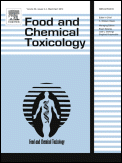
FOOD AND CHEMICAL TOXICOLOGY
Advancing food safety through rigorous toxicological research.FOOD AND CHEMICAL TOXICOLOGY, published by Pergamon-Elsevier Science Ltd, is a prestigious journal with a significant impact in the fields of food science, medicine, and toxicology, reflecting its Q1 and Q2 quartile rankings in various categories as of 2023. Established in 1982, this journal continues to serve as an essential platform for disseminating high-quality research focused on the toxicological assessment of foods and chemicals, aiming to advance knowledge that affects public health and safety. With a pivotal role in integrating diverse disciplines, including pharmacology and agricultural sciences, the journal ranks impressively within the top percentiles—specifically 95th in Toxicology and 92nd in Food Science on the Scopus metrics. Though it operates on a traditional subscription model, the journal is committed to providing valuable insights and findings to researchers, professionals, and students across the globe, making it a vital resource in the ongoing discourse around food safety and environmental health. Its comprehensive scope underscores its importance in shaping evidence-based policies and practices.
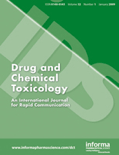
DRUG AND CHEMICAL TOXICOLOGY
Exploring the intersection of health and chemical science.Drug and Chemical Toxicology is a well-respected journal in the fields of toxicology, pharmacology, and public health, published by Taylor & Francis Ltd. Since its inception in 1978, this journal has diligently explored the effects and mechanisms of chemical exposures on health and the environment, fulfilling a crucial role in advancing scientific understanding and safeguarding public health. The journal is indexed across prestigious databases and features an impressive array of articles categorized within the Q2 and Q3 quartiles across various categories in 2023, reflecting its significance in Chemical Health and Safety as well as Environmental and Occupational Health disciplines. With an extensive reach and a focus on interdisciplinary research, Drug and Chemical Toxicology offers a rich repository of original research, reviews, and methodological advancements, catering to a diverse audience of researchers, professionals, and students dedicated to the betterment of safety and health standards. Although not an open-access publication, its articles are widely accessible to the academic community, ensuring that critical innovations and insights are shared for the greater good.

Frontiers in Toxicology
Innovating Insights into Toxicity MechanismsFrontiers in Toxicology, published by Frontiers Media SA, is a prominent open-access journal dedicated to advancing the understanding of toxicological science. Established in 2019, it serves as a vital forum for innovative research, offering insights into the pharmacological impacts and toxicological profiles of various substances. With its international reach based in Switzerland, this journal has quickly ascended in the academic community, achieving a notable Q1 ranking in Pharmacology, Toxicology and Pharmaceutics (Miscellaneous) and a Q2 ranking in Toxicology as of 2023. The journal is indexed in Scopus, where it ranks #8 out of 43 in its primary category, underscoring its influence and relevance in the field. The scope encompasses cutting-edge studies on the mechanisms of toxicity, including both human and environmental impacts, making it an essential resource for researchers, professionals, and students alike. By promoting open access to high-quality research, Frontiers in Toxicology plays a crucial role in enhancing knowledge sharing and fostering collaboration across disciplines.
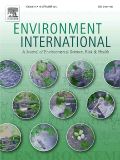
ENVIRONMENT INTERNATIONAL
Elevating Environmental Science Through Impactful ResearchENVIRONMENT INTERNATIONAL is a premier journal dedicated to advancing the field of environmental science. Published by PERGAMON-ELSEVIER SCIENCE LTD, it boasts an impressive impact factor and holds a prestigious Q1 classification in the Environmental Science category, reflecting its influence and reputation within academia. Since transitioning to Open Access in 2019, the journal has increased its accessibility, allowing a wider audience—from researchers to industry professionals—to engage with cutting-edge studies that address crucial environmental challenges. With a Scopus rank of #3 out of 233 in General Environmental Science and a commendable 98th percentile, ENVIRONMENT INTERNATIONAL is committed to publishing high-quality research that informs policy and practice. Covering a broad spectrum of topics from pollution and climate change to sustainable development, this journal serves as a vital resource for those dedicated to making a positive impact on our planet. For submissions, inquiries, or to explore its extensive archives dating from 1976 to 2024, please visit their site at the Kidlington, Oxford headquarters.
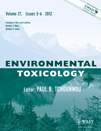
ENVIRONMENTAL TOXICOLOGY
Innovating Solutions for Environmental Health ChallengesENVIRONMENTAL TOXICOLOGY, published by Wiley, is a premier academic journal dedicated to the multifaceted study of toxic substances in the environment and their effects on human health and ecosystems. With the ISSN 1520-4081 and E-ISSN 1522-7278, this journal holds a prestigious position in the field, being ranked in the Q1 category across various relevant disciplines, including Health, Toxicology and Mutagenesis, and Management, Monitoring, Policy and Law. The journal regularly publishes high-quality research articles, reviews, and policy discussions aimed at understanding the implications of environmental toxins from 1980 to the present, contributing to the body of knowledge critical for the safety and sustainability of our environment. Researchers and professionals will find a treasure trove of information that not only highlights current trends and methodologies but also sets the stage for future advancements in toxicology. As a key resource, it provides valuable insights necessary for policy-making, environmental management, and public health, reinforcing its significance in the ever-evolving fields of toxicology and environmental science.
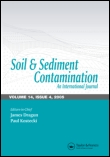
SOIL & SEDIMENT CONTAMINATION
Exploring innovative solutions for soil and sediment health.SOIL & SEDIMENT CONTAMINATION is an esteemed journal published by Taylor & Francis Inc, focusing on critical research in the realms of environmental chemistry, soil science, and pollution. With an ISSN of 1532-0383 and an E-ISSN of 1549-7887, the journal serves as a vital platform for disseminating innovative studies from 1996 to 2024, offering insights that are pivotal to both academic and professional communities. Operating from the United Kingdom, this journal holds a respectable ranking within Q3 in Environmental Chemistry and Health, Toxicology and Mutagenesis, and Q2 in Soil Science as of 2023, indicating its significance in the respective fields. Researchers and professionals are encouraged to explore the journal's open access options, enhancing visibility and access to groundbreaking studies on soil and sediment contamination. With a Scopus ranking placing it in the 66th percentile for Soil Science and substantial contributions to understanding environmental pollutants, SOIL & SEDIMENT CONTAMINATION is essential for those dedicated to advancing the science and remediation of contaminated environments.

Toxicology and Environmental Health Sciences
Empowering Researchers to Combat Environmental Health RisksToxicology and Environmental Health Sciences is a peer-reviewed journal published by the Korean Society for Environmental Risk Assessment & Health Science, dedicated to advancing the fields of toxicology and environmental health. With an ISSN of 2005-9752 and E-ISSN 2233-7784, this journal serves as a vital platform for researchers, professionals, and students seeking to explore the intricate relationships between environmental risks and public health. Operating from South Korea, it has a converged years span from 2009 to 2024, and currently holds a respectable Q3 quartile ranking in both Health, Toxicology and Mutagenesis and Toxicology. This positions the journal within a critical space for those invested in understanding and mitigating environmental health challenges. Although not an open-access journal, it continues to foster high-impact research, contributing to a better understanding of toxicological sciences and environmental health dynamics. Engage with the latest findings and discussions that shape this evolving field through the insightful articles published herein, reinforcing its importance as a resource for scholars and practitioners alike.

TOXICOLOGICAL SCIENCES
Advancing Toxicology for a Safer TomorrowTOXICOLOGICAL SCIENCES, published by Oxford University Press, is a premier journal in the field of toxicology that has been a cornerstone of scientific discourse since its inception in 1981. With an impressive 2023 impact factor and ranked in the Q1 category for Toxicology, this journal is highly regarded among researchers, professionals, and students dedicated to pharmacology and toxicology. The journal is committed to advancing the understanding of toxicological science, covering a breadth of topics that include the mechanisms of toxicity, risk assessment, and the regulatory aspects affecting public health. With an ISSN of 1096-6080 and an E-ISSN of 1096-0929, TOXICOLOGICAL SCIENCES facilitates open access scholarly work, ensuring that critical research reaches a global audience and promotes collaborative learning. As it converges towards 2024, the journal remains pivotal in shaping the future of toxicology research, providing insights that are essential for developing safer chemicals and protecting environmental health.

Toxics
Fostering collaboration in the fight against toxins.Toxics is a leading international journal published by MDPI that has been dedicated to advancing the knowledge in the fields of toxicology, environmental health, and chemical safety since its inception in 2013. With an impressive Open Access model, it ensures that all research findings are readily available to a global audience, fostering collaboration and innovation across academia and industry. The journal is esteemed for its rigorous peer-review process and holds notable rankings, including Q1 status in Chemical Health and Safety and Q2 in both Health, Toxicology and Mutagenesis and Toxicology, reflecting its impact on critical research areas. Based in Basel, Switzerland, Toxics provides a platform for researchers, professionals, and students to disseminate significant findings on the implications of toxic substances in health and the environment, aiming to improve public health outcomes and inform regulatory decisions. With its ongoing commitment to high-quality research and relevant access options, Toxics continues to be an essential resource in the domain of toxicology and environmental sciences.
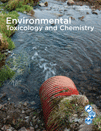
ENVIRONMENTAL TOXICOLOGY AND CHEMISTRY
Exploring the delicate balance between toxins and ecosystems.ENVIRONMENTAL TOXICOLOGY AND CHEMISTRY is a premier journal published by Wiley that has established itself as an essential resource for researchers, professionals, and students in the fields of environmental chemistry and toxicology. With a robust trajectory since its inception in 1982, the journal offers critical insights into the interactions between environmental pollutants and biological systems, aiming to advance our understanding of the impacts of toxins on health and ecosystems. Recognized in the top quartile (Q1) of both Environmental Chemistry and Health, Toxicology, and Mutagenesis categories as of 2023, the journal is respected for its rigorous peer-reviewed content and high impact factor. It ranks 33rd out of 148 in Health, Toxicology and Mutagenesis and 48th out of 147 in Environmental Chemistry according to Scopus metrics, placing it firmly within the most influential publications in these fields. Although it does not currently offer open access, the journal remains a vital conduit for disseminating cutting-edge research and innovative methodologies that address pressing environmental challenges.